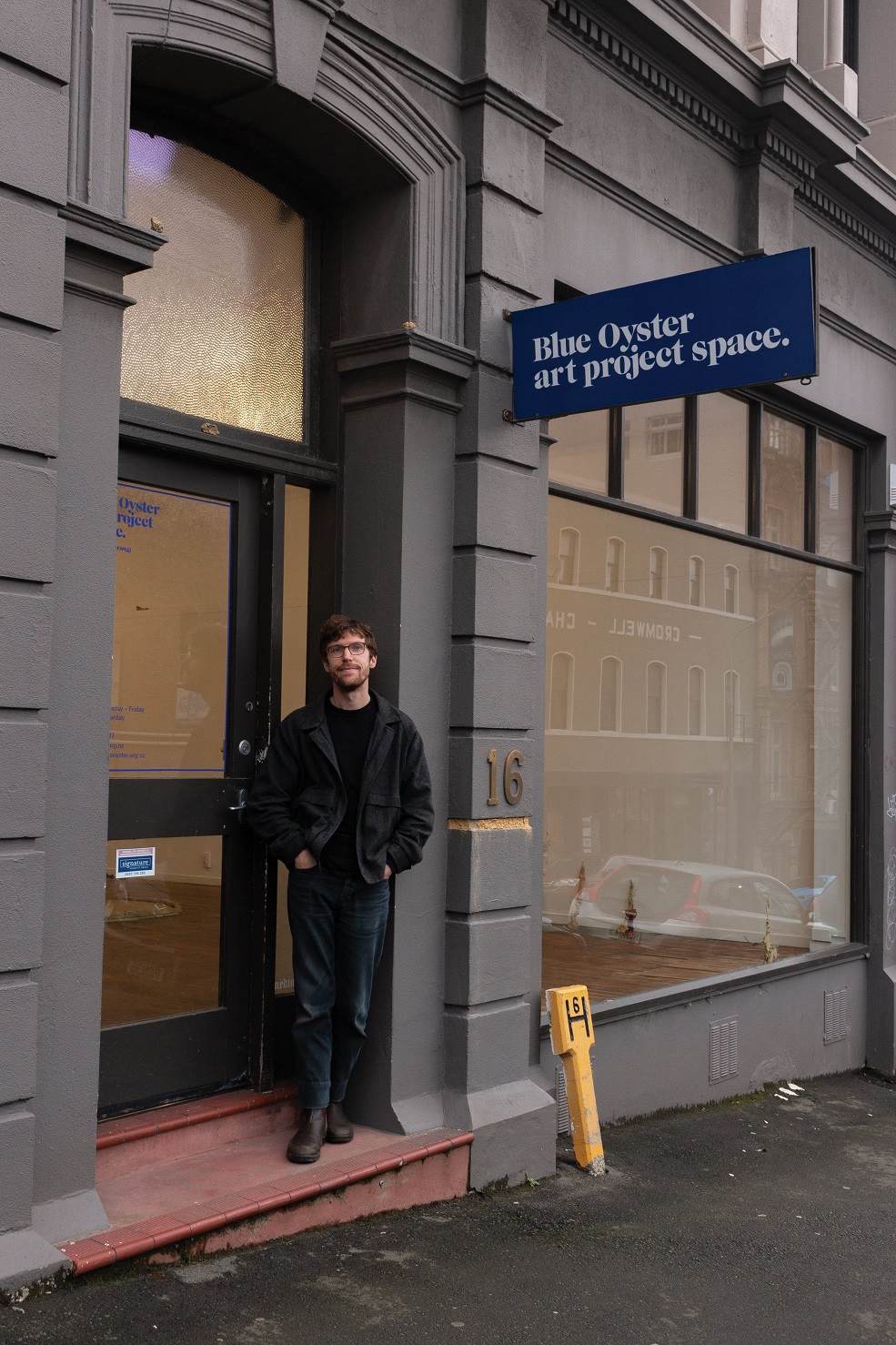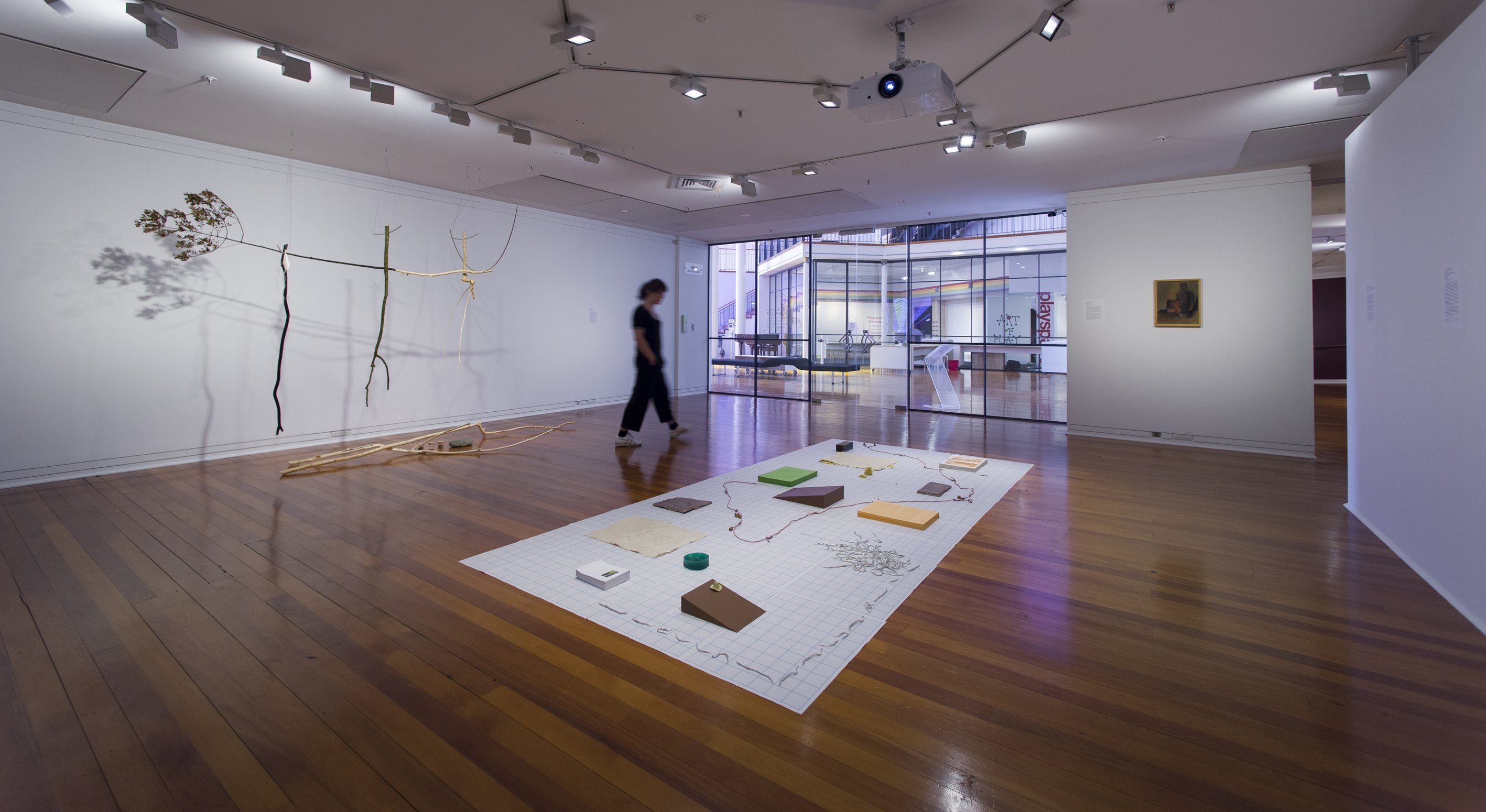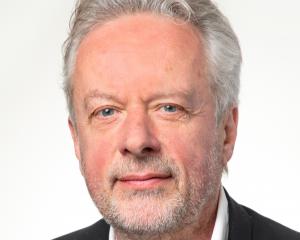
Unexpected and surprising is what Simon Palenski is promising for upcoming shows at the Blue Oyster Art and Project Space.
Just a few months into his job as director of the gallery, Palenski and his new team — office co-ordinator Caitlin Rose Donnelly, design and publishing co-ordinator Rosa Devinson and public programmes and communications co-ordinator Lindsey de Roos — are finding their feet.
For Palenski, the job is another step in an unexpected career path. From Christchurch, Palenski studied New Zealand history at the University of Canterbury and creative writing with the Iowa Workshop at the International Institute of Modern Letters, Victoria University of Wellington Te Herenga Waka. He is also a graduate of Ako Tuatahi and Ako Tuarua te reo Māori taught at Hagley College.
With friends who were studying at the Ilam School of Fine Art, he was constantly exposed to the art world and discovered there were many similarities to what he liked.
"A lot of artists operate at the intersection of what I am interested in. I come not strictly from an art background; I studied history and am interested in local histories and research. I studied English as well, so am interested in writing and fiction.
"A lot of art practices operate along those lines as well, but it’s also really creative and you can learn so much from working with artists and working on different projects — it’s something I enjoy."
He began to combine his interest in history with art publishing pieces in Art News New Zealand, Circuit Artist Moving Image Aotearoa New Zealand, HAMSTER, The Pantograph Punch and Vernacular.
Along with two of his artist friends, Zina Swanson and James Oram, he co-directed Paludal art space, and also worked as a visitor host and exhibitions technician at Christchurch Art Gallery Te Puna o Waiwhetū.
"I learned so much working with artists, and working on different projects is something I enjoy."
So when he learned of the Ihupukutaka Kairauhī curatorial internship at the Dunedin Public Art Gallery (DPAG) he decided to apply.
"It’s a really good programme and I wanted to learn more about working in a collection-based art museum. I guess I wanted to see what it was like working in the curatorial field, and it’s one of the few programmes in New Zealand where you can do that kind of thing."
He was awarded the internship and moved south last year. The internship culminated in an exhibition, "Memories of a Naturalist", which brought together artworks and archival documents looking a the tracks and traces of plants and animals in common landscapes.
"It was a mix of new work and works from the DPAG collection, and the Paemanu collection and primary resource material from the Hocken as well. It was exciting to figure out a way to bring all the different elements together in an exhibition."
Through the exhibition Palenski also wanted to investigate how people’s perceptions of the natural environment and the world around them has shifted, tracking how things had changed based on different people’s observations and records.
"Things that seem perfectly normal now were quite a shock in the late 19th century in terms of environmental degradation."
This was evident in the depiction of late 19th century acclimatisation societies, where species of animals and plants were introduced ad hoc to Aotearoa New Zealand as an attempt to remake the environment into a new world.

"Animals and plants are part of everyday lives, even if we live in a city — it’s not just in reserves and national parks, especially in a place like Dunedin."
Enjoying his time in Dunedin, Palenski decided to apply for the role as Blue Oyster director.
"It is a unique art space in New Zealand with a really strong history of supporting early career artists."
Being able to work alongside those artists, to give them a platform to try out new ideas and express themselves, is a real privilege, he says.
"It’s an important platform for people to see what those artists are up to."
He does not see the role as just being the gallery’s curator, as it involves a lot more than just working with the artists and organising exhibitions.
"It’s been fantastic to get the first two under my belt. It’s been a bit of a roller coaster ride."
One of the more significant events to come is a planned relocation of the gallery, which has been in its premises at Dowling St for nearly a decade after eight years in Moray Pl, and starting out in lower High St in 1999.
"We're currently looking for new premises around the city for Blue Oyster, with the plan being to move sometime next year."
Palenski is thankful for the work former director Hope Wilson (who is now a curator at the Hocken Collections) did to ensure a smooth transition.
"I‘m looking forward to the rest of the year, the programming coming up and the next two years in what Blue Oyster can do in that time. We’ll be soon calling for proposals. It’ll be mix of proposal-based shows and commissioned work.
"I hope the programme can be a bit unexpected and surprising to people."
The next show "Ka Kore, Kua Kore" is an example, with two early-career Dunedin artists, Aidan Taira Geraghty and Moewai Marsh, focusing on local waterways, especially those which have been built over, polluted or damaged over time due to colonisation. Geraghty’s sculptures are based on hīnaki — woven basket-like pots used in rivers and lagoons to catch tuna (eel) — while Marsh’s Whakaora, like her previous work Tuturu, is made from handmade paper and gathered whenua pigments and is conceptually guided by a commitment to whakapapa and kaitiakitaka.
"I’m interested in the environment and environmental issues, natural history and how artists work within these fields."
Palenski, who is committed to Blue Oyster for three years, is enjoying living in Dunedin, which reminds him of living in Lyttelton and in Wellington.
"I really like it."











